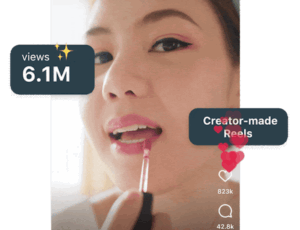Social video and connected TV advertising are both growing – but not at the same pace.
On Thursday, the IAB released the first part of its annual report on trends in digital video advertising strategy. The report is based on an IAB-commissioned Advertiser Perceptions survey of digital video buyers and brands and a partnership with Guideline, which collects media billing data.
The IAB projects digital video ad spend – including social video, CTV and online video – will rise to $63 billion in 2024, representing a 16% increase from last year.
Of the three video ad categories the report breaks out, the clear winner is social video.
Social video is expected to grow 20% year over year to $23.4 billion by the end of 2024. CTV, on the other hand, should increase 12% YOY to $22.7 billion.
Social video “is taking more of a lead over CTV” because it provides better campaign reporting based on an advertiser’s preferred business outcomes, a capability that CTV lacks in comparison, said Chris Bruderle, the IAB’s VP of industry insights and content strategy. CTV also lacks transparency into useful insights, like what shows people are watching and where in a video stream an ad appears.
While social media platforms have their own transparency troubles – just look at Meta and Google – at least they have attribution in place. Marketers are under pressure to justify their investments by connecting their ads to results, which is why they’re raising investments in social video more than CTV this year, Bruderle said.
When it comes to digital, attribution tops all
Performance is at the top of the buy-side wish list.
Black-box products like Google’s Performance Max (PMax) and Meta’s Advantage+ don’t break out campaign data by media channel or by spend. But they’re winning video ad budgets anyway, and therefore contributing to social video market growth.
These ad products are designed to optimize an ad budget across either Google or Meta inventory to reach as many users as possible who are likely to convert. Bruderle said attribution is why advertisers keep investing in these products.
AdExchanger Daily
Get our editors’ roundup delivered to your inbox every weekday.
Daily Roundup
Despite the transparency trade-offs, advertisers are speaking with their actions. The performance metrics get more budget, and the transparency concerns can wait a little longer.
CTV needs more precise measurement and attribution to compete for a larger share of digital video ad spend, Bruderle said.
Those publishers “are trying to promote shoppability as much as possible,” he said. Shoppable TV tactics can help bolster attribution by prompting viewers to click around with their remotes, introducing more signal to a CTV campaign. Streaming platforms are also inking more partnerships with retail media networks in their quest for closed-loop attribution.
But for the most part, shoppable TV remains an ambition, not a game changer.
A lack of transparency holds CTV back
Advertisers prioritize performance, but they still value transparency.
Transparency is the second factor holding back growth in CTV ad spend (after attribution), Bruderle said. Transparency is an especially urgent need for CTV advertising because the channel already suffers from inadequate attribution.
Understanding where ads ran at the show level is a big deal for streaming advertisers, Bruderle said. Buyers have been pushing for it for years, and they “are not going to stop asking.”
Show-level transparency is especially limited in programmatic auctions compared to direct deals because publishers risk violating the Video Privacy Protection Act. The VPPA prohibits companies from disclosing someone’s video consumption history without proper consent, a holdover from the days of Blockbuster video store records.
The law doesn’t mean publishers’ hands are completely tied, though. Streamers and CTV sellers could offer more programming data that’s not tied to a deterministic identifier, such as aggregate reporting on show-level impressions.
As of now, show-level transparency is making its way into more post-campaign reporting. But it’ll be a while longer, if ever, before advertisers have that data for campaign planning, especially via the bid stream.
Making sense of social chaos
Still, show-level transparency isn’t the only type of CTV transparency advertisers are pining for.
Right now, there are disparate supply paths that don’t talk to each other and often sell the same impression to the same buyer in multiple auctions. Therefore, it’s difficult, if not impossible, for advertisers to be sure where their ads ran and who saw them across devices, he said. As a result, ad repetition abounds.
This fragmentation problem is the motivation behind CTV supply-path optimization efforts aimed at reducing the number of intermediaries in an auction. Meanwhile, advertisers are mostly sticking to direct deals, including programmatic guaranteed deals (aka automated insertion orders).
When it comes to transparency, “CTV will get there,” Bruderle said.
In the meantime, if advertisers don’t get what they’re asking for from CTV sellers, Bruderle said, then they may just keep spending more on social media instead.















